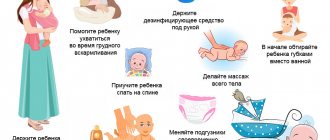The main cause of childhood candidiasis is unformed or low immunity. In the first case, newborns and toddlers are affected, in the second - adolescents. Moreover, thrush develops much more often in girls aged 11–16 years than in boys. And as practice shows, almost everyone suffers in silence, embarrassed to tell their parents about their discomfort. Meanwhile, pathogens multiply rapidly, affect new areas of the child’s body, and provoke the development of infertility. However, this will not happen if every mother knows everything about thrush in teenage girls and immediately reacts at the slightest suspicion of fungus.
Characteristics of the problem
Thrush in a girl is a fungal infection caused by Candida fungi, which are present in a healthy body in a passive state. When the immune system is disrupted, they begin to multiply and secrete toxins that damage the epithelium, organs and tissues, resulting in an infectious process. In girls, the development of candidiasis is observed in 30% of cases. Thrush most often develops in little girls aged three to seven years; it is observed in the form of urogenital candidiasis. This is often facilitated by the features of the anatomical structure of the child’s genitals:
- Undeveloped folding of the epithelium;
- Slow regeneration process in epithelial cells;
- Low estrogen levels;
- Alkaline environment of the vagina, as a result of which coccal flora develops;
- Underdeveloped immune system.
90% of cases of visiting a gynecologist in childhood are due to the development of thrush. Untimely treatment of the pathology can lead to irreversible consequences, including infertility.
Among two-year-old children, oral thrush is widespread, which occurs as a result of eating food from dirty dishes in preschool institutions, and the girl’s habit of putting dirty objects into her mouth.
Urogenital candidiasis in its acute form lasts for two months, then the pathology becomes chronic without proper treatment. Candida fungi in girls twelve years old provoke the development of vulvovaginitis, most often this occurs due to poor personal hygiene.
What complications can there be?
If the disease is not treated, the pathogen will spread throughout the body. Moreover, the organs of the reproductive system “go to” the most. Against the background of an advanced infection, uterine adhesions form, and the girl becomes unable to reproduce. The psyche also suffers, because constant discomfort and increasing symptoms of candida make the girl fear for her own health (after all, she doesn’t know that it’s a fungus and invents all sorts of, sometimes incurable, illnesses for herself).
The negative consequences of ignored thrush are:
- Cervical erosion.
- Inflammatory processes in the organs of the genitourinary system: ovaries, kidneys, bladder.
- Disorder of attraction to the opposite sex.
- Formation of oncological pathologies of the reproductive system organs.
- Blood poisoning.
Reasons for the development of pathology
Candida fungi contribute to the development of infection only when the body is weakened or the normal microflora is disrupted. The causes of violations may be:
- Congenital infection due to the presence of an infection in a pregnant woman, which is transmitted to the child during its passage through the birth canal. This problem occurs quite often;
- Frequent viral and infectious diseases;
- Insufficient intimate hygiene, the occurrence of allergic reactions;
- Weak immunity, especially in adolescence due to hormonal changes in the body, stress, and emotional stress;
- Disorders of the hormonal system, taking antibiotics and corticosteroids, as a result of which thrush develops in a teenage girl;
- Foreign bodies entering the vagina;
- Early sexual activity, unprotected sexual intercourse;
- Endocrine system disorder;
- Intestinal dysbiosis;
- Wearing underwear made of synthetic materials.
Congenital infection
Frequent viral and infectious diseases
Insufficient intimate hygiene
Weak immunity
Intestinal dysbiosis
Taking antibiotics
Girls from the age of two, who often have weakened immunity and also develop viral diseases, have a high risk of developing thrush.
Treatment of thrush in a child in the groin
To rid your baby of candidiasis and avoid further relapses, first of all, you need to pay attention to the immunity of the “young patient”. Taking vitamins, proper feeding and maintaining hygiene can help you forget about the disease for a long time.
To treat thrush in a child in the groin, drugs for general and local treatment are used, as well as more gentle, but also less effective traditional methods of treatment.
Medications
If the skin is slightly affected by the fungus, there is a possibility that the disease can be overcome by using only local remedies.
In this case, it is recommended to treat the child’s skin and mucous membranes with solutions that have an antifungal and disinfectant effect (Miramistin, Fukortsin), and apply antifungal ointments, which include cortisone, nystatin, imidazole derivatives (Miconazole, Econazole, Polygynax, Natamycin, Ketoconazole, Pimafucin, Nystanin, Clotrimazole, Levorin, Terbinafine, Amphotericin B). Drugs and treatment regimens will vary depending on the severity of the condition and the age of the child.
Typically, the course of treatment for candidiasis in children in the groin takes from 5 to 10 days. It should be remembered that an unfamiliar drug may have a number of contraindications and cause unexpected side effects. Therefore, treatment of thrush should be strictly under the supervision of a pediatrician, who will competently prescribe medication, eliminating possible risks of complications.
Thus, it is undesirable to use in the treatment of a solution of brilliant green, which dries out the delicate skin of a child, a solution of sodium tetraborate, which has a toxic effect (up to 1 year), and Fluconazole, recommended for use after 18 years.
If the disease has entered the middle or late stage, the child is prescribed systemic treatment. Narrowly targeted antifungal therapy in this case is much preferable, since complex agents negatively affect the microflora of the intestines and stomach. In parallel with antifungal drugs, probiotics, B vitamins, and vitamin C are prescribed, as well as other medications that enhance immunity.
If the use of medications is undesirable (allergic reactions, age up to 6 months), treatment with folk remedies will come to the rescue, which can be harmful only in rare cases.
Folk remedies
Among the folk remedies used in the treatment of thrush in a child’s groin, the most effective are:
- treating the skin 2-3 times a day with a weak soda solution (1 tsp soda per 1 glass of water);
- treating the skin in the groin folds, lower abdomen and between the buttocks with a disinfectant infusion of chamomile, St. John's wort, calendula and sage 3 to 6 times a day (a teaspoon of dry raw materials (or 1 filter bag) is poured with a glass of boiling water and infused for 30 minutes);
- compresses with Kalanchoe - squeeze a little plant juice onto a bandage, apply to damaged skin 2-3 times a day for 10 minutes.
Combining antifungal medications with traditional medicine has an enhanced effect on the disease, which leads to a speedy recovery and reduces the frequency of relapses of candidiasis in children.
Prevention of the appearance and development of thrush is also of considerable importance.
Symptoms
Thrush can occur in girls as young as two years old. But in some cases, it may mask a completely different disease, so it is important to get examined by a doctor. Often thrush at this age manifests itself in the form of diaper dermatitis. In this case, the disease will exhibit the following symptoms:
- The formation of small papules that can merge with each other;
- Dark red color of the affected areas of the skin;
- Humidity of the affected areas of the body;
- The appearance of watery blisters.
Forms of pathology
Candidiasis in girls can be acute or chronic. In acute candidiasis, cheesy discharge, swelling and redness of the vaginal epithelium are observed. In chronic pathology, hyperemia and infiltration of the mucous membrane of the genital organs develop. The acute form of the disease lasts about two weeks. In a chronic disease, the degree of damage is much less, moderate hyperemia and swelling are observed, and white plaque on the epithelium is present to a lesser extent than in acute pathology.
Girls who have already started their menstrual cycle experience burning and itching before the onset of menstruation, then the symptoms subside a little. Also, with this form of pathology, cracks are observed near the clitoris, labia of the perineum and perianal area. Rough folds appear on the skin of the labia, they become flabby, wrinkled and atrophic, the skin becomes brown. In some cases, blue spots are observed near the vagina. Often urogenital thrush is accompanied by candidiasis of the oral cavity and intestines.
If during the course of a year there were more than four episodes of symptoms of the disease, which alternated with periods of remission, they speak of a recurrent form of thrush. When signs of the disease persist constantly, appearing slightly less after hygiene procedures or treatment with antifungal drugs, they speak of a persistent form of candidiasis.
Diagnostic methods
Diagnosis of pathology begins with studying the medical history and examining the patient. The doctor then takes a swab from the front wall of the vagina. The material is applied to medical glass using a swab, then microscopy is performed, which makes it possible to identify fungi in a short time and determine the severity of the pathological process. The doctor may also prescribe a PCR test to identify the type of fungus and subsequently select medications to which they will be sensitive. Additionally, laboratory tests of blood and urine are prescribed.
The main disadvantages of the PCR method are the long time it takes to perform it, the high cost of the study and the need for a modern laboratory.
Prognosis and prevention
The prognosis of the disease is ambiguous. According to statistics, half of the girls undergo timely treatment and are completely cured of thrush. All others experience relapses throughout their lives. If left untreated, the infection can cause infertility in the future. With proper and timely treatment, the disease disappears after a few days, but it is important to prevent relapses of the pathology in the future by eliminating all provoking factors.
For the purpose of prevention, it is necessary to constantly maintain personal hygiene, prevent weakening of the immune system, periodically consuming vitamin complexes and immunomodulators. It is important to periodically carry out deworming, treatment of dysbiosis and other existing ailments. To prevent the development of oral thrush, you should brush your teeth and rinse your mouth daily. Teenagers are advised not to use antibacterial drugs to treat various diseases for a long period of time, and to change their underwear daily.
Teenagers need the support and attention of their parents, so it is necessary to maintain friendly relations in the family. This will help avoid many problems that concern not only the health of children.
Preventive measures
Disease prevention is an activity of high importance. Agree, it is easier to prevent the onset of an illness than to then spend a lot of effort, time and money on treating the illness. So that the girl does not have to personally become acquainted with the disease and feel all the signs of thrush, she should adhere to certain rules regarding hygiene, proper diet and lifestyle. During infancy, the issue of hygiene falls entirely on the shoulders of the parents.
They must keep the house clean, wash and bathe the baby, and disinfect pacifiers, toys, and objects with which she often comes into contact. It is equally important to give the child a break from diapers, which create favorable conditions for life not only on the genitals, but also on the skin. To avoid detecting signs of illness in a girl’s mouth, you need to make sure that it dries out and give it water on time. Mothers should tell girls about the dangers of synthetic underwear, which also creates a good environment for Candida to live.
It is good to replace synthetics with linen or cotton. When they become independent, they will have to remember the correct instructions from their caring mothers. Very often, teenage children begin to actively learn and try something new, so thrush can occur due to smoking and drinking alcohol. Therefore, you should seriously think about and refuse this. Also recommended:
- do not take strong drugs unless necessary (for example, antibiotics),
- timely treat any emerging disease,
- do not start sexual activity very early.
Diet food
Both for thrush and to prevent the disease, a girl’s diet should consist of foods enriched with vitamins, microelements, proteins, and lactobacilli. Therefore, it is useful to eat:
- lean meat and fish;
- cottage cheese, kefir, fermented baked milk, natural unsweetened yogurt;
- nuts, eggs, greens (cabbage, spinach).
It is very useful to eat onions, garlic, lemons, and sour green apples, because they help kill parasitic fungi. Prohibited foods include processed foods, baked goods made with yeast, white bread, corn, grapes, bananas, plums and other sweet fruits. Signs of thrush can appear after overeating confectionery, fatty, spicy, pickled foods, and yeast drinks. Sugar beets, honey, corn, jam, sugar and any foods high in sugar also contribute to the proliferation of candida.











